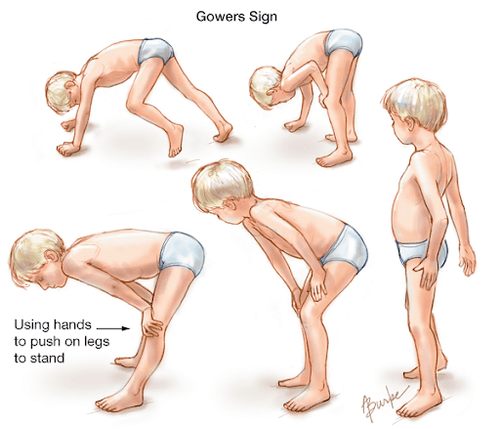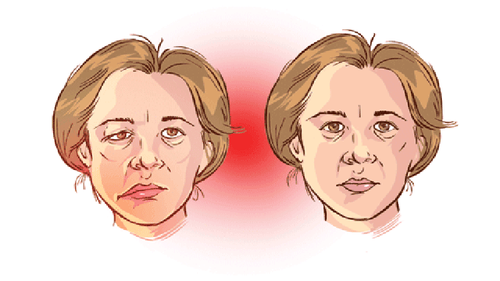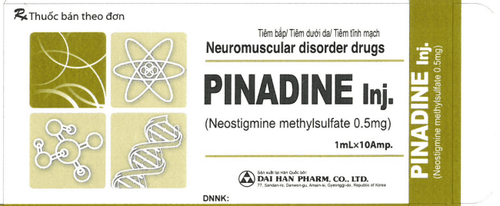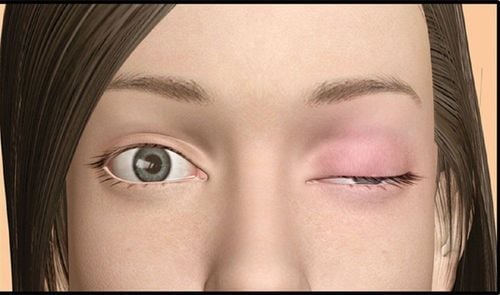This is an automatically translated article.
Consulted by BSCK II Pham Thi Son - Neurologist - Department of Medical Examination & Internal Medicine, Vinmec Hai Phong General HospitalMyasthenia gravis is an autoimmune disease and is the most common disorder of neuromuscular transmission. Because the body produces an antibody that affects the transmission of information from the nerve to the muscle, causing muscle weakness.
1. Signs of myasthenia gravis
Signs of myasthenia gravis is a weakening of the muscles, leading to:
Eyelid ptosis: This is the earliest common symptom of myasthenia gravis. Eyelid ptosis is usually worse in the afternoon. Difficulty breathing due to weakened chest wall muscles Difficulty chewing or swallowing due to weakness of pharyngeal muscles, making it difficult for the patient to close the mouth, or drool Difficulty climbing stairs, rolling objects or lifting Heavy objects Difficulty talking Often tends to droop or bow down Facial muscle paralysis or weakness of facial muscles Body weakness Voice changes
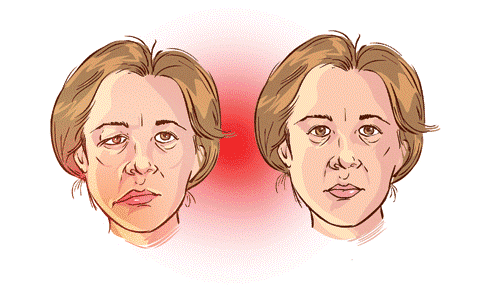
2. Complications of myasthenia gravis
The most worrisome and dangerous symptom of myasthenia gravis is respiratory failure due to weakness or paralysis of the respiratory muscles (including diaphragm, intercostal muscles, sternocleidomastoid, trapezius). In many cases, patients have complete paralysis of the respiratory muscles, leading to rapid death if not treated promptly.
Besides, poor swallowing and coughing is also a cause of aspiration complications and pneumonia, contributing to worsening respiratory failure. In addition, myasthenia gravis also makes patients always feel tired, exhausted, eat poorly, reduce or lose the ability to concentrate, affect relationships, difficult to integrate and community.
3. How long does myasthenia gravis live?
The survival time of patients with myasthenia gravis depends on the time of disease detection, treatment adherence and factors related to the patient himself. In fact, patients can live with myasthenia gravis for many decades, however, they must have a reasonable diet, work, appropriate activities and receive treatment as soon as the disease is detected.
Some tips to prolong life for patients with myasthenia gravis:
● Choose a specialized medical facility for examination, diagnosis, accurate treatment indications and proper advice.
● Plan daily activities to stay healthy in the best way.
● Each patient with myasthenia gravis should act as his or her own “special nurse” and devise ways to keep myasthenia gravis as stable as possible.
● When taking medicine for a long time, it is necessary to pay attention to follow the instructions of the doctor to limit unwanted effects.
● Avoid strenuous work, unnecessary fatigue.
● Limit stress
● Avoid infection (eg open wounds, exposure to crowds,
cold).
● Consult your doctor for advice on taking drugs that directly affect neuromuscular transmission and all medications you are taking.

4. Good news for myasthenia gravis
Previously, when immunosuppressive methods were not yet applied, about 30% of patients with myasthenia gravis would die prematurely due to the effects of the disease and more than 60% of patients could not improve their symptoms of myasthenia gravis. muscle or condition worsens. Furthermore, up to 70% of patients die when myasthenia gravis becomes acute myasthenia gravis.
However, the good news for myasthenia gravis is that now with modern treatments, people with myasthenia gravis can completely live an almost normal life, life expectancy is not significantly reduced compared to those with myasthenia gravis. otherwise healthy and quality of life is not affected too much.
However, patients will have to depend a lot on the treatment drugs for many years continuously or even for life, leading to the risk of dangerous side effects of the drugs. In general, in the treatment of myasthenia gravis, the doctor will, depending on the severity of each case, choose the appropriate treatment, usually a combination of medical and surgical methods.
In short, the goal of treatment for myasthenia gravis is not to cure the disease completely, but can only treat the symptoms, reduce the signs of myasthenia gravis and partially inhibit the progression of the disease. Patients who notice signs of myasthenia gravis need to consult a doctor for timely treatment, to avoid prolonged exposure to increase the risk of dangerous complications.
Please dial HOTLINE for more information or register for an appointment HERE. Download MyVinmec app to make appointments faster and to manage your bookings easily.





